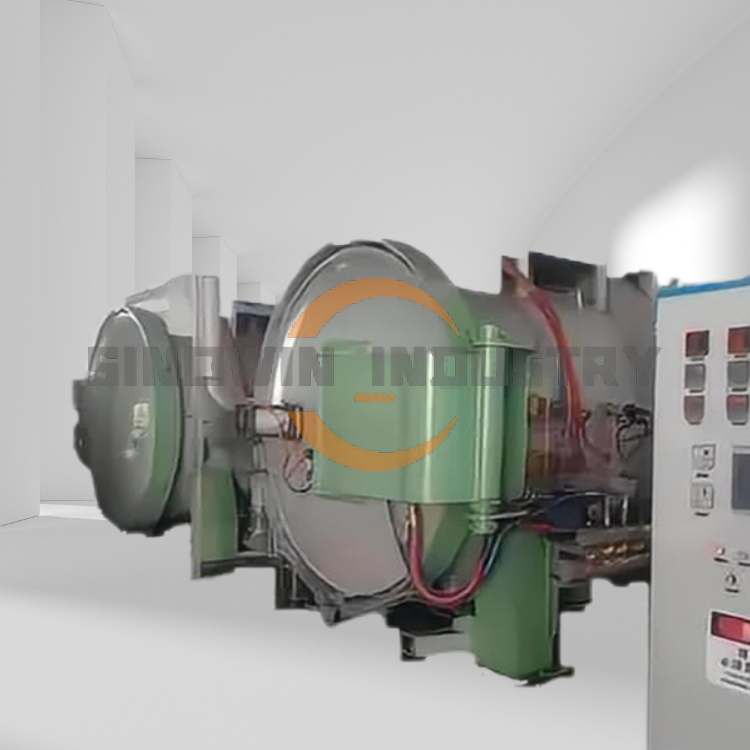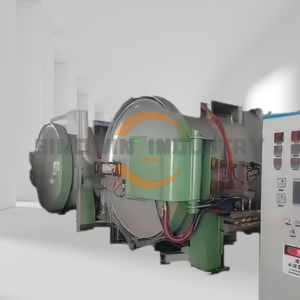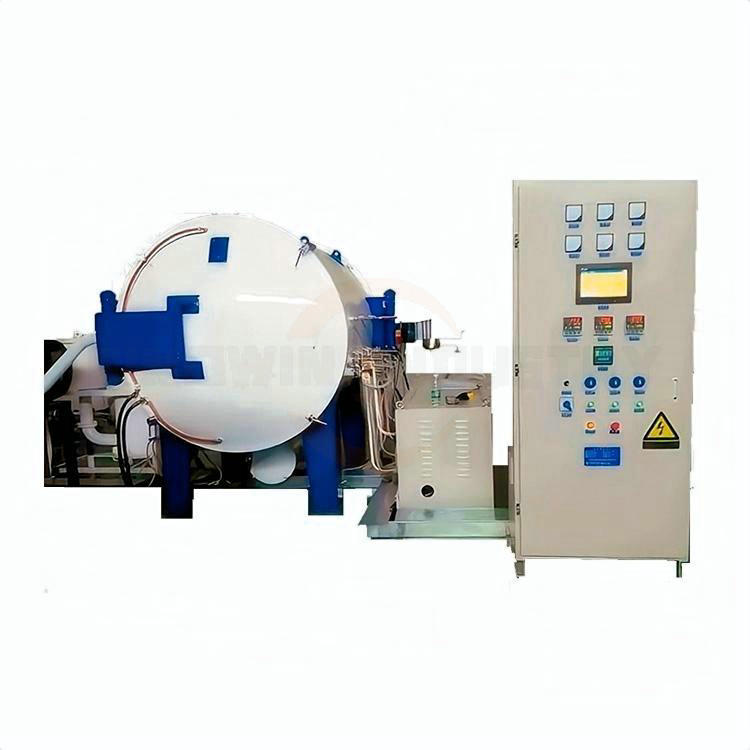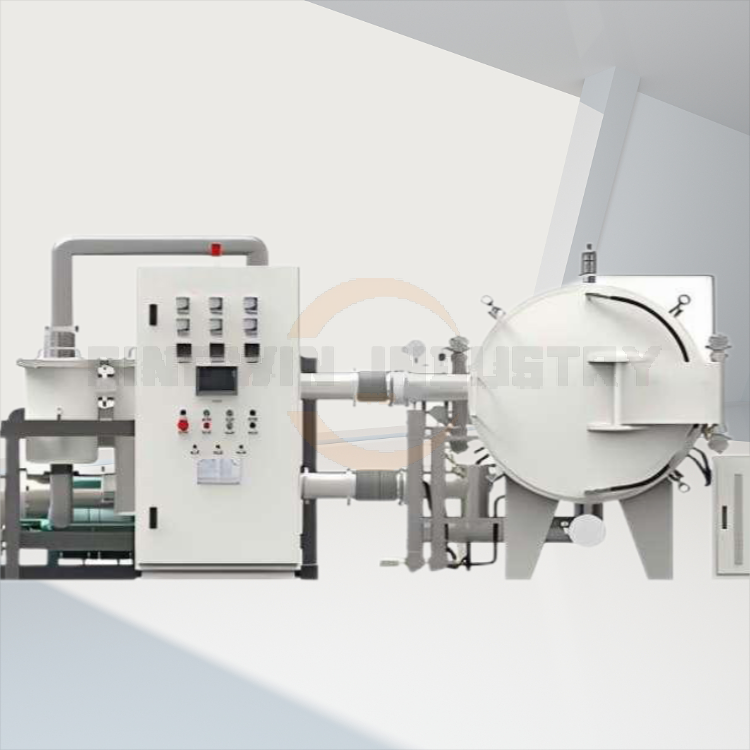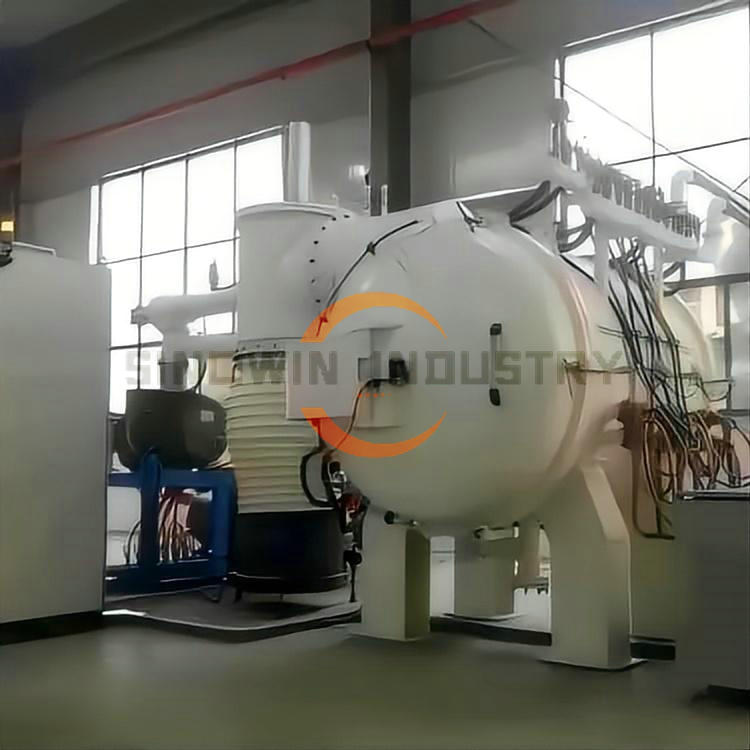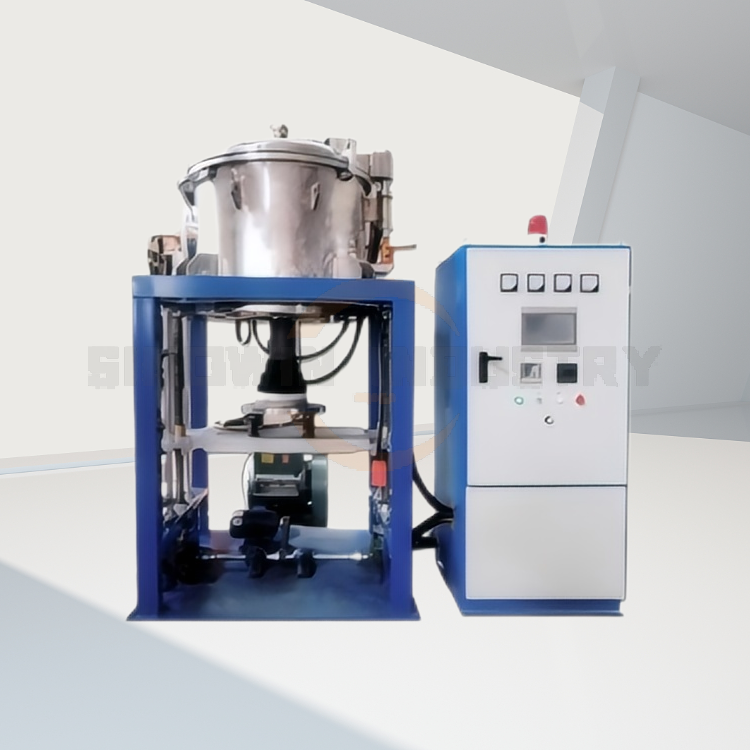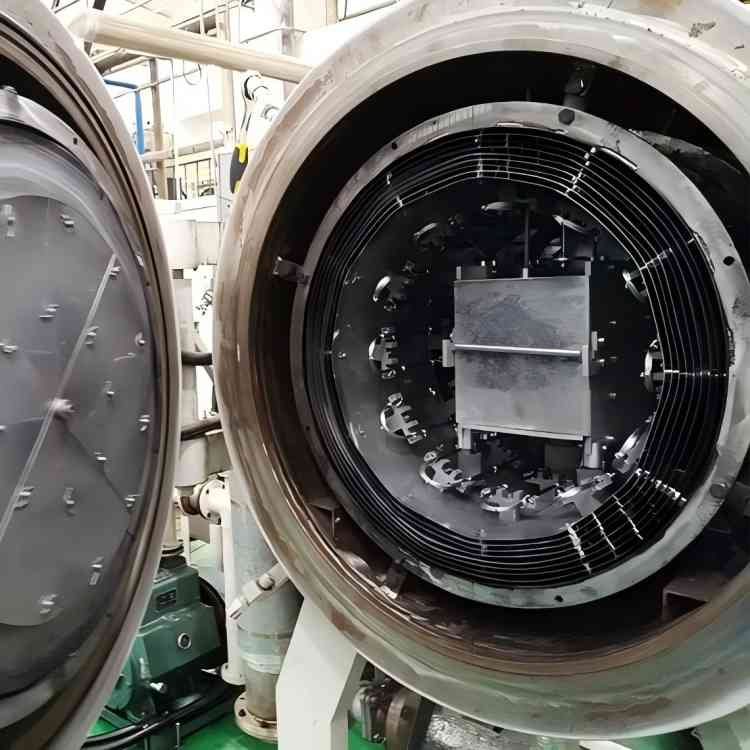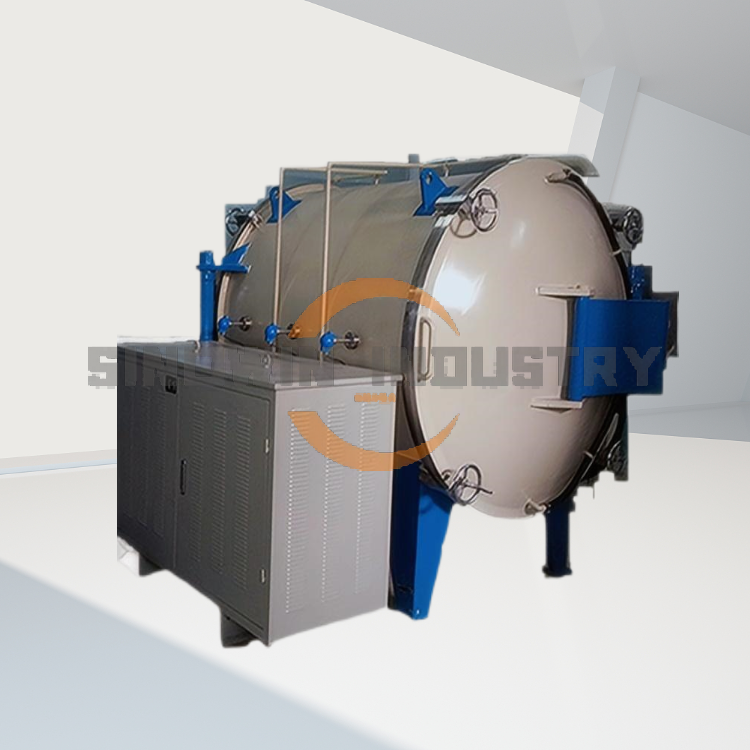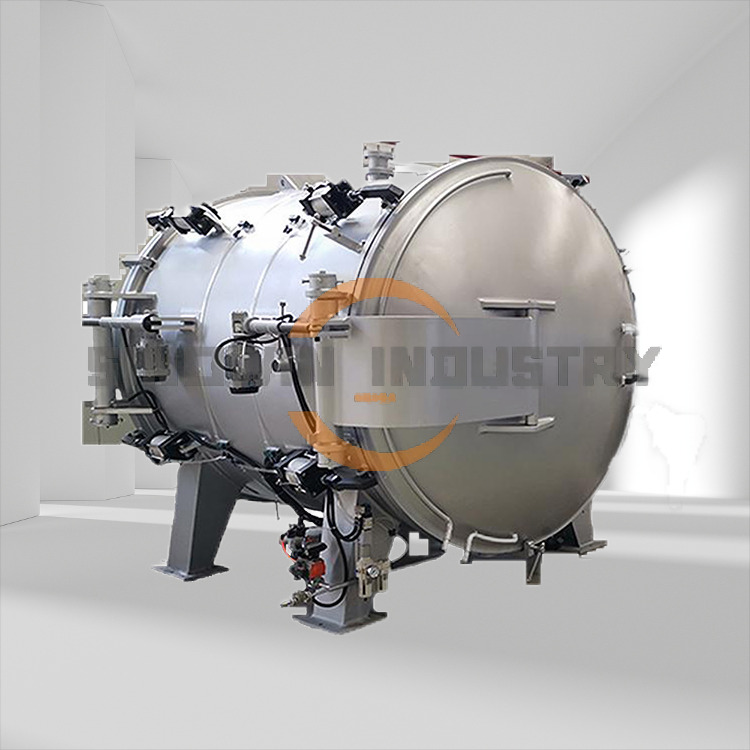Product Description:
The Large High-Temperature Graphitization Furnace, is an innovative technologies in graphitization furnace tailored for the most demanding applications in the fields of battery anode materials, structural carbon components, C/C composite materials, carbon fibers, and carbonaceous materials. This furnace is designed to effectively sinter a variety of materials including phosphor graphite and other graphite substances, as well as any materials that can be sintered or melted in a carbon environment.
Key Features of the Large Graphitization Furnace:
- Superior Design: The Large Graphitization Furnace is constructed using high-quality insulation materials and an advanced furnace chamber design, enabling operation at temperatures reaching up to 3000°C. This makes it exceptionally suited for high-performance applications.
- Increased Production Efficiency: The furnace leverages a single power source to operate multiple furnace bodies simultaneously, significantly boosting production capacity. Its design considers the long cooling time, allowing for other furnace bodies to be heated during this period, optimizing the workflow.
- Intelligent Temperature Control: Equipped with a digital, intelligent temperature control system, this furnace ensures precise measurement and control throughout the heating process. Capable of following a predetermined heating curve, it can store up to twenty distinct heating processes with a total of 400 segments, facilitating a variety of thermal profiles.
- Comprehensive Control Systems: The Large Graphitization Furnace features a fully integrated PLC (Programmable Logic Controller) system for automatic control and protection of water, electricity, and gas, ensuring operational safety and efficiency.
- Versatility and Flexibility: Designed for multi-furnace operation, the PLC system allows for intelligent switching between furnaces, providing flexibility and scalability in production.
The Large High-Temperature Graphitization Furnace embodies innovation and precision, making it the optimal choice for industries requiring high-performance graphitization processes. Whether you are in research, analysis, or manufacturing, the Large Graphitization Furnace supplied from SINOWIN INDUSTRY is your best choice.
Donot hesitate to Contact us today for a quote and transform your scientific journey completely.
Technical Parameter:
| Working Temperature | ≥2000℃ | ≥2200℃ | ≥2500℃ | ≥2600℃ | ≥2800℃ | ≥3000℃ |
| Working Size | Φ500X1000 | Φ600X1200 | Φ700X1500 | Φ800X1600 | Φ900X1800 | Φ1000X2000 |
| Furnace Chamber | Vertical /Horizontal | |||||
| Atmosphere | Vacuum, H2,Ar,N2, inert gas etc., | |||||
| Temperature Uniformity | ≤±10℃ | |||||
| Temperature Measurement | Far-infrared optical temperature measurement | |||||
| Temp.Testign Range | 10003000℃/03000℃ | |||||
| Temperature measurement accuracy | 0.2~0.75% | |||||
Q&A for Large High-Temperature Graphitization Furnace
Q1: What applications can the Large High-Temperature Graphitization Furnace be used for?
A1: The Large High-Temperature Graphitization Furnace is designed for a variety of applications including the production of battery anode materials, carbon structural components, C/C composite materials, and carbon fibers. Additionally, it is suitable for the sintering of carbon materials, phosphor graphite, and other graphite materials at high temperatures, as well as for sintering and melting other materials in a carbon environment. This versatility makes it an essential tool in advanced material processing.
Q2: What temperature range does the Large High-Temperature Graphitization Furnace reach?
A2: This exceptional furnace can achieve operating temperatures up to an impressive 3000°C. The design incorporates high-quality insulation materials and an efficient furnace chamber structure, ensuring reliability and performance even at these extreme temperatures. This enables it to effectively process a wide range of materials requiring high-temperature treatment.
Q3: How does the cooling and heating process work in the Large High-Temperature Graphitization Furnace?
A3: The Large High-Temperature Graphitization Furnace is engineered for efficiency, where multiple furnace bodies can be powered by a single energy source. Due to the extended cooling times associated with high-temperature operation, the system is optimized to utilize these periods by allowing other furnace bodies to heat simultaneously. This innovative feature enhances overall production output while maintaining consistent quality.
Q4: Is it easy to control and monitor the heating process for the Large High-Temperature Graphitization Furnace?
A4: Absolutely! The furnace is equipped with a digital intelligent temperature control system that automates the temperature measurement and control process with high precision. Users can set specific heating curves, and the system can store up to twenty distinct heating profiles with a total of 400 segments. This allows for optimal customization and replication of heating processes tailored to various material requirements.
Q5: What safety features are included in the Large High-Temperature Graphitization Furnace?
A5: Safety is a top priority in the design of the Large High-Temperature Graphitization Furnace. It is integrated with a comprehensive PLC control system that automates the regulation and protection of water, electricity, and gas. This system ensures safe operation by monitoring parameters continuously and executing pre-set safety protocols to mitigate risks and protect both the equipment and the operator.
Feel free to let me know if you need more information or further assistance about Sinowin Industry’s Large High-Temperature Graphitization Furnace.
Technical Parameter of the Large 3000℃ Graphitization Furnace:
| Working Temperature | ≥2000℃ | ≥2200℃ | ≥2500℃ | ≥2600℃ | ≥2800℃ | ≥3000℃ |
| Working Size | Φ500X1000 | Φ600X1200 | Φ700X1500 | Φ800X1600 | Φ900X1800 | Φ1000X2000 |
| Furnace Chamber | Vertical /Horizontal | |||||
| Atmosphere | Vacuum, H2,Ar,N2, inert gas etc., | |||||
| Temperature Uniformity | ≤±10℃ | |||||
| Temperature Measurement | Far-infrared optical temperature measurement | |||||
| Temp.Testign Range | 10003000℃/03000℃ | |||||
| Temperature measurement accuracy | 0.2~0.75% | |||||
